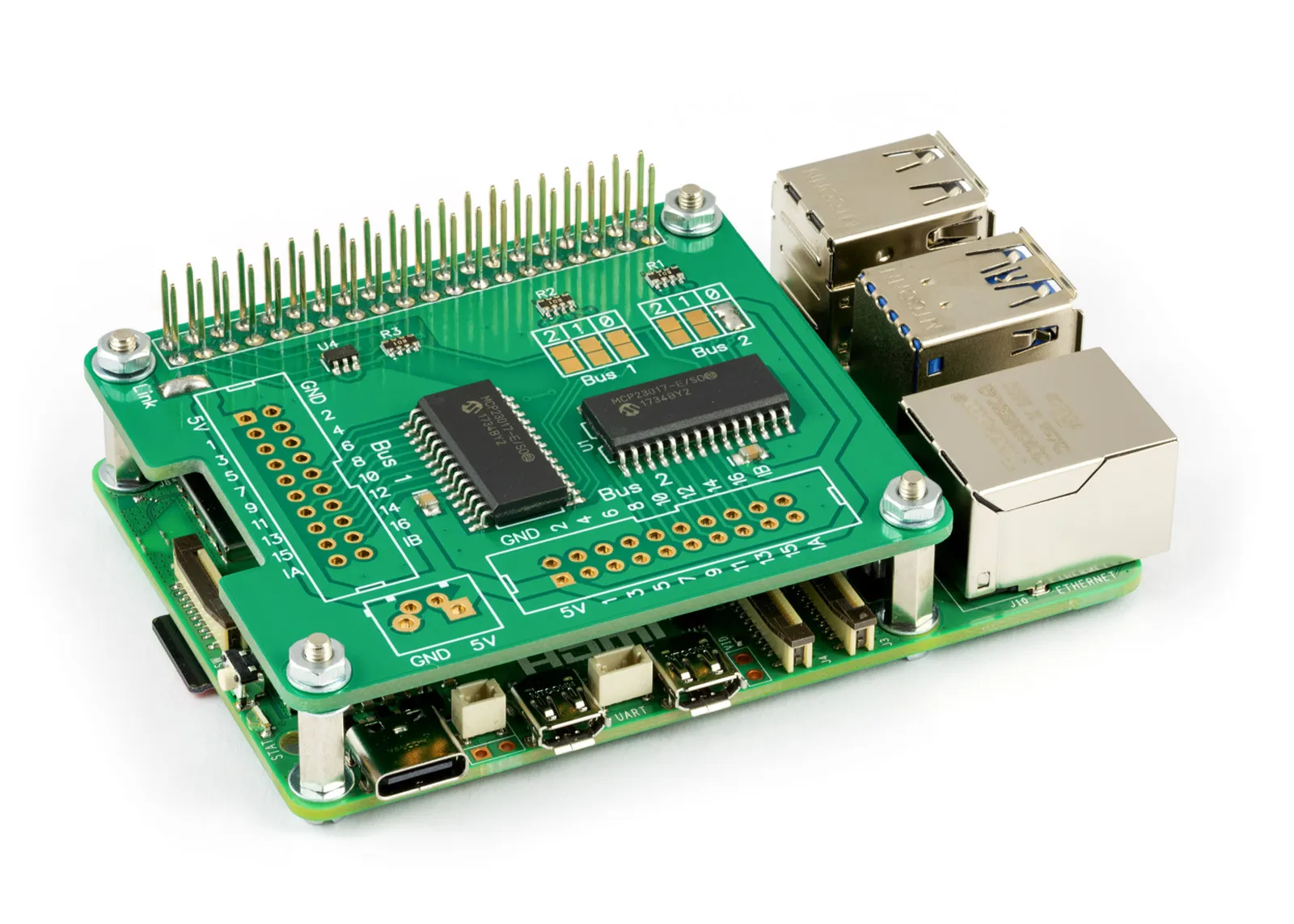New IO Pi Plus 2.1 Development Board
 One of our most popular development boards is the IO Pi Plus. This board was based on our old IO Pi but updated to fit the newer HAT style introduced with the Raspberry Pi B+. The IO Pi Plus has been used by thousands of customers worldwide, and we have received lots of positive feedback about the board and our software libraries. We have also received a few suggestions on ways we could improve the board, and after looking at the most popular suggestions, we are proud to announce a new revised version of the IO Pi Plus, version 2.1.
One of our most popular development boards is the IO Pi Plus. This board was based on our old IO Pi but updated to fit the newer HAT style introduced with the Raspberry Pi B+. The IO Pi Plus has been used by thousands of customers worldwide, and we have received lots of positive feedback about the board and our software libraries. We have also received a few suggestions on ways we could improve the board, and after looking at the most popular suggestions, we are proud to announce a new revised version of the IO Pi Plus, version 2.1.
The circuit schematic is like the old version and uses the same MCP23017 I/O expander from Microchip. We are now in the SOIC package for the chips instead of the old SSOP package, as we have found the SOIC is less susceptible to solder bridges between the pins. The main change to the schematic is we have changed the I2C address jumpers to be tied to ground with pull-down resistors, whereas the old version used pull-up resistors. This should result in a slight drop in the current consumption of the board.
The main changes we have made are to the mechanical layout of the board. The reduce the amount of soldering needed when you receive the board we have removed the older 12-pin address header and power jumper and replaced them with solder bridges on the PCB. This means that unless you plan on using several IO Pi Plus boards on a single Raspberry Pi, you only have to solder the 40-pin header to the board before you can use it. If you want to use two or more boards, you will need to configure the I2C addresses by putting solder bridges across the appropriate pads.
The 5V and GND input pins can now be used with 2.54mm headers and 5mm screw terminals. This should make it easier to connect larger power cables to the board.
The two I/O buses now have two extra pins for supplying 5V and ground to your external devices. We have also made the layout for the I/O bus connectors compatible with 20-pin IDC headers so you can use ribbon cables with the IO Pi Plus. If you plan to use two or more development boards on your Raspberry Pi, we recommend using right-angle IDC headers so the ribbon cables plug into the side of the board instead of on top. This reduces the overall height to less than 11mm, the space between two stacked boards.
Along with the new version of the IO Pi Plus, we are also releasing the design files for an open-source relay board that you can build to use with the IO Pi Plus. It uses the same 20-pin connector as the two buses on the IO Pi Plus, so you can connect them with a ribbon cable to operate up to 16 relays from each bus.
The new IO Pi Plus is available from our online store.
More details about the relay board can be found in our knowledge base, and the project files can be downloaded from our GitHub archive.